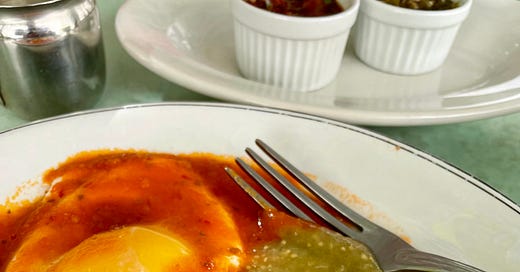I’d forgotten how satisfying a proper Mexican breakfast could be until last week, in La Paz, Mexico, in Baja, when I had the above sunny-side up eggs on blue corn tortillas and both red and green salsas (called, owing to the red-green divide, Heuevos Divorciados, or Huevos Navidad, depending how cynical or sentimental you are, I suppose). But it makes a…
Keep reading with a 7-day free trial
Subscribe to Ruhlman's Newsletter to keep reading this post and get 7 days of free access to the full post archives.




